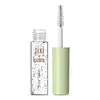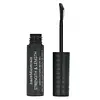What's inside
What's inside
 Key Ingredients
Key Ingredients

No key ingredients
 Benefits
Benefits

 Concerns
Concerns

No concerns
 Ingredients Side-by-side
Ingredients Side-by-side

Water
Skin ConditioningButylene Glycol
HumectantAlcohol
AntimicrobialAcrylates/C10-30 Alkyl Acrylate Crosspolymer
Emulsion StabilisingGlycerin
HumectantPhenoxyethanol
PreservativeLeuconostoc/Radish Root Ferment Filtrate
AntimicrobialAloe Barbadensis Leaf Extract
EmollientSodium Hydroxide
BufferingPanthenol
Skin ConditioningEthylhexylglycerin
Skin ConditioningDisodium EDTA
Potassium Sorbate
PreservativeSodium Benzoate
MaskingCitric Acid
BufferingSodium Sulfite
PreservativeWater, Butylene Glycol, Alcohol, Acrylates/C10-30 Alkyl Acrylate Crosspolymer, Glycerin, Phenoxyethanol, Leuconostoc/Radish Root Ferment Filtrate, Aloe Barbadensis Leaf Extract, Sodium Hydroxide, Panthenol, Ethylhexylglycerin, Disodium EDTA, Potassium Sorbate, Sodium Benzoate, Citric Acid, Sodium Sulfite
Water
Skin ConditioningVp/Va Copolymer
Dipropylene Glycol
HumectantButylene Glycol
HumectantPanthenol
Skin ConditioningSqualane
EmollientRibes Nigrum Seed Oil
EmollientSaccharomyces/Iron Ferment
Skin ConditioningSaccharomyces/Magnesium Ferment
Saccharomyces/Zinc Ferment
Skin ConditioningSaccharomyces/Silicon Ferment
Skin ConditioningSaccharomyces/Copper Ferment
Skin ConditioningLeuconostoc/Radish Root Ferment Filtrate
AntimicrobialTrifolium Pratense Flower Extract
AstringentAcetyl Tetrapeptide-3
Skin ProtectingDextran
Trisodium Ethylenediamine Disuccinate
Acrylates/C10-30 Alkyl Acrylate Crosspolymer
Emulsion StabilisingHydroxyethyl Acrylate/Sodium Acryloyldimethyl Taurate Copolymer
Emulsion StabilisingAminomethyl Propanol
BufferingPolysorbate 60
EmulsifyingSorbitan Isostearate
EmulsifyingEthylhexylglycerin
Skin ConditioningPhenoxyethanol
PreservativeWater, Vp/Va Copolymer, Dipropylene Glycol, Butylene Glycol, Panthenol, Squalane, Ribes Nigrum Seed Oil, Saccharomyces/Iron Ferment, Saccharomyces/Magnesium Ferment, Saccharomyces/Zinc Ferment, Saccharomyces/Silicon Ferment, Saccharomyces/Copper Ferment, Leuconostoc/Radish Root Ferment Filtrate, Trifolium Pratense Flower Extract, Acetyl Tetrapeptide-3, Dextran, Trisodium Ethylenediamine Disuccinate, Acrylates/C10-30 Alkyl Acrylate Crosspolymer, Hydroxyethyl Acrylate/Sodium Acryloyldimethyl Taurate Copolymer, Aminomethyl Propanol, Polysorbate 60, Sorbitan Isostearate, Ethylhexylglycerin, Phenoxyethanol
 Reviews
Reviews

Ingredients Explained
These ingredients are found in both products.
Ingredients higher up in an ingredient list are typically present in a larger amount.
Acrylates/C10-30 Alkyl Acrylate Crosspolymer is a synthetic polymer. It is used to thicken and improve the texture of products. Due to its properties, it can prevent water and oil ingredients from separating.
Butylene Glycol (or BG) is used within cosmetic products for a few different reasons:
Overall, Butylene Glycol is a safe and well-rounded ingredient that works well with other ingredients.
Though this ingredient works well with most skin types, some people with sensitive skin may experience a reaction such as allergic rashes, closed comedones, or itchiness.
Learn more about Butylene GlycolEthylhexylglycerin (we can't pronounce this either) is commonly used as a preservative and skin softener. It is derived from glyceryl.
You might see Ethylhexylglycerin often paired with other preservatives such as phenoxyethanol. Ethylhexylglycerin has been found to increase the effectiveness of these other preservatives.
Leuconostoc/Radish Root Ferment Filtrate is a natural preservative. It comes from fermenting radish roots with a bacteria called leuconostoc.
Leuconostoc comes from lactic acid.
This ingredient has antimicrobial properties and helps prevent the growth of bacteria in a product.
Leuconostoc is used to make the traditional Korean side-dish, kimchi. It is also used to make sourdough bread (both incredibly yummy foods).
Learn more about Leuconostoc/Radish Root Ferment FiltratePanthenol is a common ingredient that helps hydrate and soothe the skin. It is found naturally in our skin and hair.
There are two forms of panthenol: D and L.
D-panthenol is also known as dexpanthenol. Most cosmetics use dexpanthenol or a mixture of D and L-panthenol.
Panthenol is famous due to its ability to go deeper into the skin's layers. Using this ingredient has numerous pros (and no cons):
Like hyaluronic acid, panthenol is a humectant. Humectants are able to bind and hold large amounts of water to keep skin hydrated.
This ingredient works well for wound healing. It works by increasing tissue in the wound and helps close open wounds.
Once oxidized, panthenol converts to pantothenic acid. Panthothenic acid is found in all living cells.
This ingredient is also referred to as pro-vitamin B5.
Learn more about PanthenolPhenoxyethanol is a preservative that has germicide, antimicrobial, and aromatic properties. Studies show that phenoxyethanol can prevent microbial growth. By itself, it has a scent that is similar to that of a rose.
It's often used in formulations along with Caprylyl Glycol to preserve the shelf life of products.
Water. It's the most common cosmetic ingredient of all. You'll usually see it at the top of ingredient lists, meaning that it makes up the largest part of the product.
So why is it so popular? Water most often acts as a solvent - this means that it helps dissolve other ingredients into the formulation.
You'll also recognize water as that liquid we all need to stay alive. If you see this, drink a glass of water. Stay hydrated!
Learn more about Water